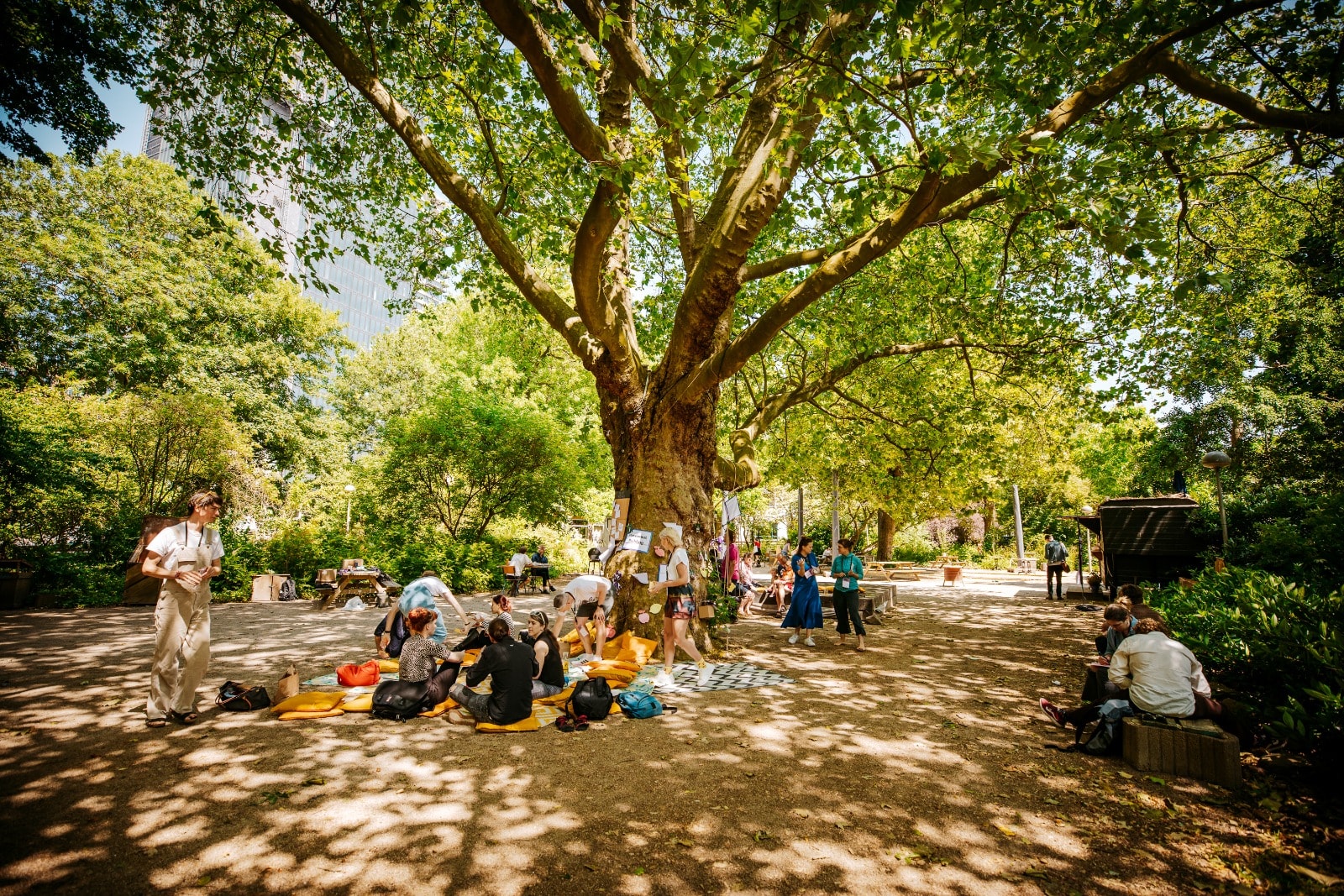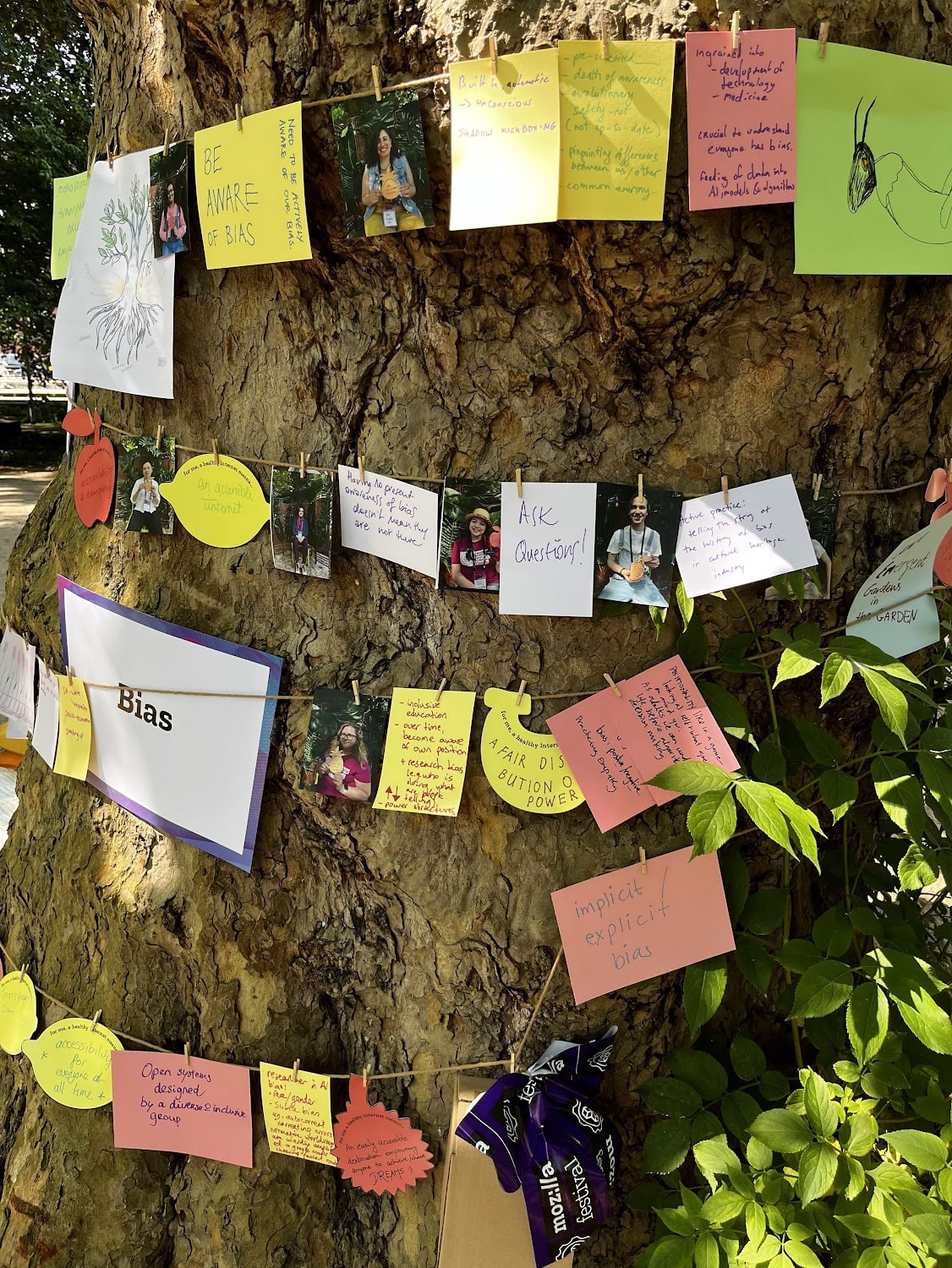Wood Wide Web

Right when I was about to hang up a self-made swing I felt particularly proud of on a branch of a magnificent London Planetree in an Amsterdam Noord garden a staff member of the venue came up to me: “You do know that this tree was used for hangings and executions, years ago?”
LESSON #1: Look up the history of a tree before you decide to make it the centerpiece of your experience design.
Philo and I called our company “Gradual” to symbolise progressive, slow evolutions, ensuring that we learn from each other – which I guess now also includes repurposing the good vibes of our green friends. 🤷♂️
Earlier this year we designed a so called ‘virtual garden’ for participants of Mozilla Festival to facilitate conversations around internet health. Here, we thought of the internet as a living, breathing eco-system that’s constantly in flux: we actively invited participants to be gardeners so we could take care of the internet together by visualising it into tangible, real life forms we are all familiar with.
When MozHouse came to Amsterdam two weeks ago for the first physical event since covid it just so happened to have a beautiful garden available at the venue – so we started working on how we could convert the virtual concept into an IRL version of it. One thing we knew for sure: we wanted to include the seat that came out of the virtual edition earlier, prompting participants with the question: ‘what does internet health mean to you?’

It turns out it’s easier to find parallels between the organic and the digital than you may think. They don’t call it the Wood Wide Web for nothing.
LESSON #2: trees are never inherently evil. Neither is the internet. We should all care about our digital rights, even when we think it doesn’t pertain to us.

